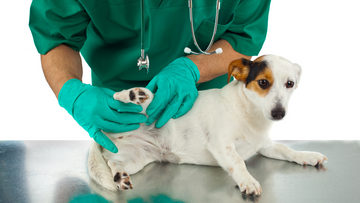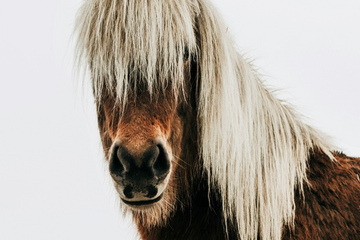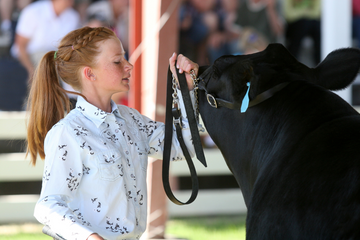As riders, it's effortless to assume that everything sees the world as we do. From the dogs and cats at the barn to our very own horses, the colorful and often clear world we see is not the same world animals see. Here are ten things to keep in mind when working with horses.
Horses have limited color vision
A horse's vision is often compared to the vision of a red/green colorblind person. This means apples will look very similar, and the colors they see the most are shades of yellow and blue. Keep this in mind when selecting colors for things you want to be highly visible to horses.
Horses' depth perception is different from people

For context, a human's 20/20 vision means we can see details at 20 feet. Horse's vision, on the other hand, is said to be 20/30. This means that the details humans can see at 30 feet, a horse would need to be at 20 feet to see. This discrepancy is part of why horses' depth perception is not the same as people's, at least until a horse gets closer to an object.
Horses see well at night
Horses see better than people at night. This is because their rectangular pupil and tapetum lucidum – an internal structure – reflects light and allows decent sight in dim settings.
Horses struggle with quick lighting changes
Horses may be able to see better at night, but they take longer to adjust to changes in lighting. While people's eyes can quickly adjust, horses need up to 20 minutes to fully adjust to dim barn aisles and dark trailers. So be patient with your horse when heading into a new barn or arena with a lighting change.
Horses have a built-in shade structure in their eyes
If you've ever looked closely at a horse's eye, you've likely seen the granulae iridica, a small, wavy and protruding shade structure in the horses' eye. This helps them in bright scenarios, and it's speculated that it assists in-depth perception.
Horses see moving objects better than stationary ones
Understandably, as prey animals, horses see moving objects better than stationary ones. If you see a pony in a field 50 yards away that hasn't moved, prepare for your horse to notice the pony when it starts moving if they don't smell it first.
Horses will raise their heads to focus on objects
A horse raising its head gives an opportunity for their binocular vision (vision using both eyes for things in front of them) to be put to use. If a horses' head is tucked and behind the vertical, their binocular sight is reduced to the dirt in front of them. A horse raising its head gives them better sight and improved depth perception.
Horses experience eye irritation, just like people
Horses can experience eye irritation and blindness from external factors and genetic diseases. Flies and uveitis, also called moon blindness, can cause eye irritation and weeping.
Horses are prey animals, and their eyes are placed laterally on their heads
This means something coming from their side is actually the center of their vision since they have predominantly monocular vision (meaning their eyes work independently).
Horses see nearly 360 degrees, with a few exceptions
Thanks to their eye placement, horses see 90% of what's around them. They have blind spots directly behind them and very close in front of them, although a slight turn of the head alleviates the blind spots.






















